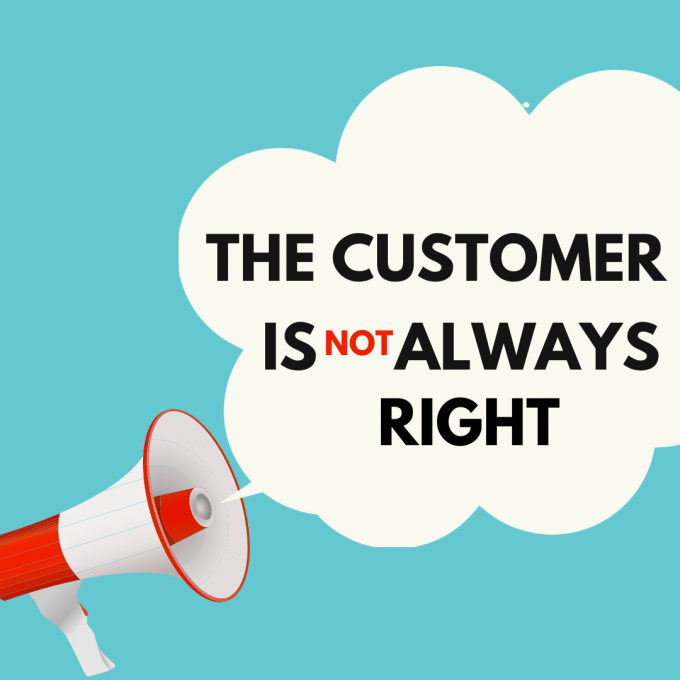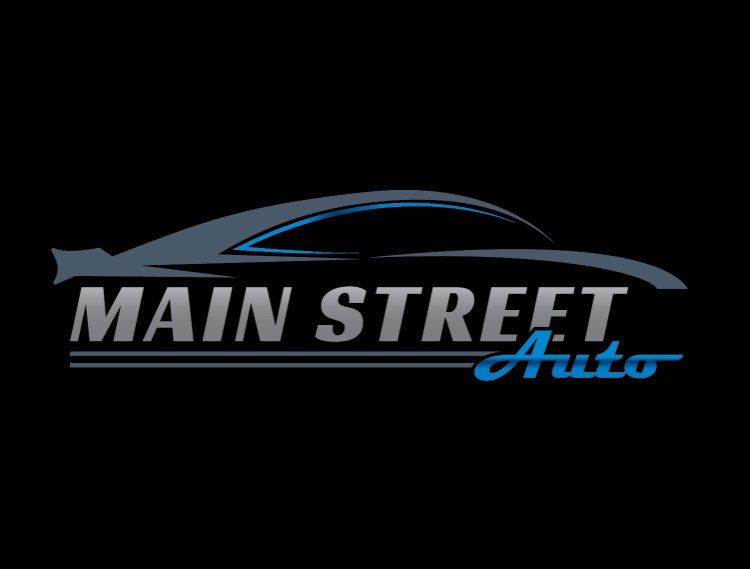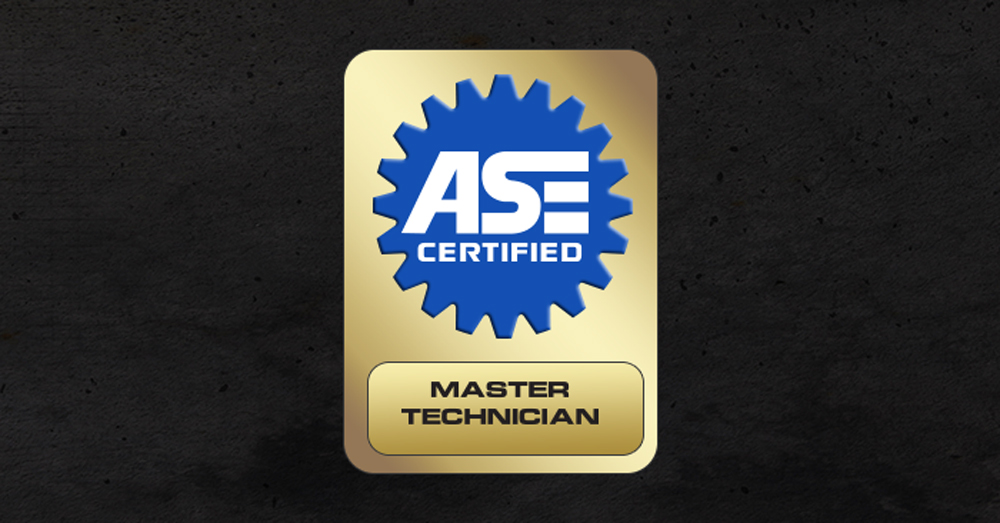-
Posts
4,905 -
Joined
-
Last visited
-
Days Won
456
Content Type
Forums
AutoShopOwner Articles
Downloads
Blogs
Gallery
Profiles
Events
Store
Links Directory
Shop Labor Rates
Community Map
Posts posted by Joe Marconi
-
-
21 hours ago, xrac said:
Some tires and sizes are in short supply. I had to order from 3 different warehouses recently to get a set of four.
This is nuts. The time spent chasing down parts and tires does eat into profits.
-
I thought this article from Ratchet and Wrench was an interesting perspective. Let me know what you think? Joe Marconi
Is It Time to Raise Your Labor Rates?
With increasing costs and rising inflation, many shop owners realize it may be time to raise their labor rates. But it’s always a battle.
There are several factors to consider, including customer satisfaction. Every shop owner needs to keep their pulse on the industry and make sure they're running an effective business, but when do you know, and what steps should you take when you’re considering raising your labor rates?
The Backstory
Andy Massoll, founder and CEO of The Detroit Garage, has been working in the auto industry for over 20 years. His father opened their first store, Curt’s Service Center, which Massoll still operates as part of The Detroit Garage auto family.
Massoll understands the battle shop owners go through when considering raising their labor rates. He also knows there’s a misconception in the industry that gets a lot of shop owners into trouble: the difference between a door rate and an effective labor rate.
The Problem
It’s difficult to run a shop, and it’s certainly not easy to find and keep professional technicians. It’s vital to know your numbers. Massoll bases his labor rates on his effective labor rate, analyzing his wages and costs.
Massoll says understanding your effective labor rate is critical and provides a better insight into your true costs, including the costs of obtaining and keeping your skilled labor.
“If I can’t obtain or retain (professional) talent … that is when, clearly, I need to pay more,” Massoll says.
Shops need to control rates to balance customer expectations and run the business.
The Solution
Massoll keeps a close eye on his shops’ productivity. That means understanding how many billable hours your shop is producing and comparing the number of hours worked.
Understanding where your productivity is at is crucial in determining raising your labor rates.
“You can’t begin to make an educated guess on what (the) labor rate you should charge is until you truly know your labor costs,” Massoll says. “And it’s hard to know your labor costs if you don’t understand and know your labor proficiency or productivity.”
Close supervision is key, but you don’t need to write it all out on a whiteboard. Massoll uses a software program to make sure he has a keen understanding of his shops’ productivity. Their goal at The Detroit Garage is to always be at 100 percent productivity overall. That helps Massoll understand when it’s the right time to raise his rates.
Additionally, Massoll is on top of his numbers. He spends time in the weeds, analyzing his total number of labor hours and the labor dollars they sell per store over a month, comparing that to his employees’ wages, and understanding the true costs of his business.
Massoll knows when it’s the right time to raise those rates because he’s spent the time analyzing his numbers, working to keep on top of a gross profit goal of 70 percent to 72 percent on labor.
The Aftermath
Eventually, there comes a time when it’s necessary to increase those rates, and Massoll has done so fairly recently.
Economic factors are also important to consider—factors like rising parts costs and inflation. As inflation soared to around 7 percent in 2021, Massoll gave all his employees a 7 percent pay rate increase to counter that economic influence. Because of that, he increased his labor rates.
The Takeaway
With prices going up everywhere, Massoll’s biggest piece of advice for other shop owners is to charge appropriately for your work.
He says too many shop owners think of the decision emotionally, wanting to help their customers. Massoll acknowledges it needs to be a factual and calculated decision.
Massoll notes that he once had a long-term customer come in, who, when he paid for his bill, asked, “That’s it? That seems too cheap.”
Massoll explained to him that he was a good customer, and Massoll wanted to take care of him. The customer told him, “If you don’t charge me appropriately and be profitable in your business, and you go out of business, how does that help me the next time I need your service?”
That’s a lesson that’s stuck with Massoll through the years.
“This industry is full of very good people; our business is in helping people. People have car problems, and we help them,” Massoll says. “But we do that for a monetary exchange. And too many business owners run their business with their heart, and when it comes to business, you have to be profitable.”
-
 1
1
-
-
Now that I am not a shop owner, I had to make an appointment to have the A/C checked on my wife's car. While the vehicle was being serviced, the tech noticed a bubble on the tire. I told the service advisor to get me a good set of Michelins. He said that might be hard since he had trouble getting some sizes and models. My wife drives a Mercedes E350.
Are you seeing tire-related shortages too?
-
The Summer is in full swing, a time when many people take vacations and also spend time engaging in their favorite hobbies and activities.
How do you spend your free time?
-
I will never forget the day when a customer, who didn't like the price, took cash out of his pocket, crumbled up the cash, and threw the money at me.
This customer clearly crossed the line, in my opinion.
Before I tell the rest of this "true" story, I would like to hear from you: How would you have handled this situation?

-
2 minutes ago, Transmission Repair said:
It's bad for retirement accounts. 😞
HA! I know!!!!!
-
2 hours ago, Transmission Repair said:
I don't know if PPC would work for G/R. G/R is relationship based. PPC worked like gangbusters for me. I increase our sales $500K/yr. with PPC. It cost me only 10% of my increase in sales, or $50K/yr. I got addicted to it like a drug. I would pause it to control customer flow. If we started to get caught up, I would un-pause it. If it got really slow I would increase the radius of PPC around the shop. It allowed me to control the workflow in the shop. I did all my own PPC advertising; I didn't pay anybody else.
Wow, amazing numbers! viewpoints That's the beauty of a forum like this, we get to hear all viewpoints, strategies, and opinions!
-
 1
1
-
-
19 minutes ago, Transmission Repair said:
Transmission repair is transaction-based. Google PPC paid ads worked best for me.
Interesting. Do you think a lot has to do with the fact that you were in the transmission business, and needed to reach out to a different clientele than most traditional auto repair shops that tend to build long-term relationships?
-
October 4 - October 6, 2022
Fly with the Eagles
The Industry’s Most Powerful Shop Management Course
This is a 3-day course, with each day devoted to a new topic, but you have the option to pick and choose the days you’d like to attend.
October 4th-6th, 7:30am – 5:00pm EST
After attending this comprehensive course for shop owners you will be able to
- Improve your skills in time management, leadership, and goal setting
- Fully understand your shop’s financials and key performance indicators
- Find and hire superstar service advisors and technicians
- Turn your existing employees into self-motivated superstars
- Fill your bays with the right kind of customers through new marketing programs
- Utilize your step-by-step Action Plan to ensure your ongoing success
This AMI-accredited course has one objective: to help you create a more profitable, successful business! Bob Cooper built this course from the ground up based on his own success as a shop owner and his experience in helping thousands of other shop owners go right to the top.
This series is now presented by Joe Marconi and Kevin Vaught, who have both experienced extraordinary success as shop owners as well, so it’s no surprise that Fly With the Eagles II is heralded by many industry leaders as the most powerful shop management series available to shop owners and general managers.
To learn more and to register: https://eliteworldwide.com/event/fly-with-the-eagles/








-
1 hour ago, xrac said:
Selling big ticket repairs is easier for us than it has ever been.
Nice! Keep it going! But build for the future at the same time.
-
 1
1
-
-
3 hours ago, xrac said:
I absolutely agree. Someone with a few hundred reviews is doing something to artificially prop up the rating if they are 5.0. They are paying for reviews or refunding unhappy customers. I have 1 star reviews from non customers, 1 star reviews from disgruntled ex-employees, and even 3 star reviews from happy customers. As long as you keep you rating average above 4.0 you should be fine. Tons of people tell me they came because of our reviews and we average 4.5. The positive is that many of our 5.0 review, customers leave us raving comments.
Agree Frank! Great comments. And shops need to be careful they don't "steer" only the customers they know will give them a 5-star review.
-
According to studies from Northwestern, Birdeye, and other companies, people are most influenced by reviews with an average rating of 4.2 to 4.5 stars out of 5 — making this the ideal average star rating for purchase probability.
Having all 5-star Google reviews can work against you. People may not trust a company with all 5-star reviews. No business is perfect, and you cannot please everyone. Also, people make mistakes.
Having negative reviews is not the end of the world, in fact, it may actually help your business.
Thoughts? Comments?

-
On 6/19/2022 at 9:47 AM, tomkatv10 said:
First, it begins with branding. I had my logo professionally designed as a unisex logo. It appeals to both men and women. The way we did it was to make the car have curves and although the logo is predominantly black and silver, a touch of blue was splattered in it to soften it.
Then it was about splattering it all over the community. We are on the carts at the local supermarket. We are in the church bulletins. We advertise on the local high school sports channel. Our banner is at most of the major sports fields and we advertise in various elementary school parent promos.
No postcards or mailers, no coupons, no gimmicks. We made ourselves part of the community and the community has responded in kind. I couldn’t take anymore work from coupons if I tried. And a side note, we are surrounded by dealerships, big franchises, and other independents. Giving back to your community will be your best advertising in my opinion.
Well said! Branding is key. It's all about name awareness. Obviously, you need to have a quality reputation, but branding in the long-term will give a shop a better ROI than lost leaders or discounting marketing. And I agree with you, that community involvement is crucial these days.
Nice Logo too!
-
 1
1
-
-
18 hours ago, vbtoytech said:
At the dealership, our pay plan is based solely on our certification. Unfortunately, there is nothing past master. So, no matter how good you are or how long you have been working, the pay rate is set. Half the techs have left and I am on my way.
Back in 1980, I left a Ford Dealership for a lot of reasons, mostly the toxic culture. Fortunately, it pushed me into owning my own repair shop.
I need to ask you, is it all about money, or are there other reasons why techs are leaving, including yourself? Your perspective is greatly appreciated.
-
22 hours ago, Jerrys Auto Center said:
Especially since new car dealers are pushing purchasing over leasing!
It’s a lot easier for a customer to swallow a $1500 repair/ maintenance/ “Let’s get this baby fixed up” bill than $30K PLUS for a replacement vehicle.
Agree, and that is what I have found through the years.
-
 1
1
-
-
18 hours ago, vbtoytech said:
Beyond specializing on makes and models, I find it difficult to work on pre OBDII cars in general. I wasn't around back then.
I was around in the pre-OBDII days, so that isn't an issue for me. However, when I was a young tech (back in the mid-1970s) the cars from the 1940s and 1950s were different and a challenge for me, even though they were very basic in nature.
For most, we look forward and learning new technologies, but there will always be those that learn about the past technologies too.
-
SOURCE: Tire Review Magazine:
Auto shoppers in America are more likely than ever before to consider buying a fully electric vehicle, and new EV entries are responsible for much of the added consideration. These new entries, many from long-established vehicle manufacturers, are turning EV skeptics into likely EV considerers, according to the J.D. Power 2022 U.S. Electric Vehicle Consideration Study.
 The percentage of shoppers who say they are “very likely” to consider an EV for their next purchase or lease climbs to 24%, four percentage points higher than a year ago, the study says. Several factors are at work in promoting the increase, but the introduction of new electric models—some of which are in an important and largely untapped segment such as pickup trucks—is a primary reason for the increased consumer interest.
The percentage of shoppers who say they are “very likely” to consider an EV for their next purchase or lease climbs to 24%, four percentage points higher than a year ago, the study says. Several factors are at work in promoting the increase, but the introduction of new electric models—some of which are in an important and largely untapped segment such as pickup trucks—is a primary reason for the increased consumer interest.
One hurdle to EV adoption revolves around shoppers’ living and working situations. There is a substantially higher ratio of shoppers who own their home who say they are “very likely to consider” an EV (27%) than those who rent (17%). Not only are homeowners more affluent, on average, but are more likely to be able to charge an EV at their residence. Perhaps most tellingly, 34% of those who indicate they are unlikely to consider purchasing an EV say they lack access to any charging capabilities at home or work.
The study, now in its second year, finds that the more vehicle owners drive, the more they are likely to consider an EV. While daily commuters who are encountering higher fuel prices are logical candidates to switch to EVs, those who take frequent vacations and road trips might be assumed to be less likely to adopt EVs. But, like heavy commuters, heavy road-trippers have a higher EV purchase consideration tendency than those who use their vehicles less often for this purpose. It could be an indication that frequent drivers are increasingly seeing the advantages of EVs compared with their gasoline-powered counterparts.
Still, as the number of EV models proliferates, auto manufacturers must seek to convert the large percentage of EV shoppers who say they are “somewhat likely” to consider into actual customers. The study points out a key opportunity to accomplish that: expose EVs to those shoppers who have never driven, ridden in or even sat in such a vehicle.
Echoing last year’s findings, the 2022 study reveals that firsthand experience with EVs plays an important role in purchase consideration. Only 11% of study respondents who had no personal experience at all with EVs say they are “very likely” to consider an EV. That percentage more than doubles to 24% among those new-vehicle shoppers who have simply been a passenger in an EV and rises to 34% among those who have driven an EV. Owners of EVs are also sold on the technology, as 48% of owners say they are “very likely” to consider another EV for their next vehicle purchase.
Following are key findings of the 2022 study:
- EV consideration stronger among premium buyers: Since purchase price continues to play a prominent role in the vehicle purchase process, and because EVs often have higher price tags than their gas-powered counterparts, it is not unexpected that EVs are finding more favor among premium buyers than mass-market buyers. Some 37% of premium vehicle owners indicate they are “very likely” to consider an EV for their next purchase vs. just 21% among those who currently own mass-market vehicles.
- EV consideration by owners of mass-market vehicles on the rise: Though premium vehicle owners remain more likely to consider EVs than owners of mass-market vehicles, the owners of mass-market vehicles increasingly register an interest in buying an EV. The year-over-year increase in those who say they are “very likely” to consider an EV is up to six percentage points among owners of mass-market vehicles and up one percentage point among owners of premium vehicles. This suggests some owners of mass-market vehicles are receptive to more affordable EVs.
- More information engenders more consideration: The study reinforces findings from a year ago that a lack of information about EVs is a key factor in shoppers’ rejection of them. Nearly one-third (30%) of rejecters cite a lack of information as a reason for their lack of consideration. Because firsthand experience with EV technology is still not entirely commonplace, shoppers need to be better informed about the ownership experience they offer.
- EV consideration by geographic location: It is not unexpected that new-vehicle shoppers in the West region show the highest proclivity for EV purchase. Some 31% of those in the West say they are “very likely” to consider an EV. Surprisingly, the South (26%) tops the Northeast (22%) among those who say they are “very likely” to consider an EV. The North Central is at 22%.
- Legacy automakers turn in strong showing: Owners of numerous mass market brands express an increased interest in EVs from a year ago. At the same time, owners of several premium brands, including Tesla, express somewhat less interest in making their next vehicle an EV. “Tesla remains a dominant player, but new-vehicle shoppers are proving quite willing to consider EVs from legacy brands,” Stropp said.
The U.S. Electric Vehicle Consideration Study is used to gauge EV shopper consideration. Study content includes overall EV consideration by geography; demographics; vehicle experience and use; lifestyle; and psychographics, the company says. It also includes model-level consideration details such as cross-shopping and “why buy” findings and an analysis of reasons for EV rejection. The study measured responses from 10,030 consumers and was fielded from February through April 2022.
-
15 hours ago, IMAGE ONE said:
I'll answer this first, with a story. It's a bit of a long read, but it will be worth it.
For my own shop 40 years ago, I took the "branding" approach for the first couple of years. This strategy was advised by my father, a lifelong ad man, as a way to build trust and name recognition with my local community. One of the best things we did was sponsorships. We sponsored a Little League team, softball team, peeWee football, church functions, local and school events, bicycle races, marathons, and children's charities. Sure, we started out small, but kept reinvesting in our community as we grew. We used banners, t-shirts, radio, car show booths and just about everything else promoters came to us for.
We had great looking business cards and eventually had brochures professionally done which we would give to EVERY person coming in for an estimate, and two to EVERY person that picked up their car after a repair, asking them to give them to pass them along to family members or friends. We had a professionally designed yellow pages ad (they were very relevant...back then). We did local radio commercials. I personally went to the local car dealers that didn't have a body shop, and talked up ours. Granted, we did excellent work at a fair price, but let's assume that's a baseline.
BRANDING, and participation in local events, got us off to a seriously great start. By the end of year three, we were one of the largest shops in Colorado, with 2 locations, a used car operation, a 2 acre junkyard and 7 figure sales...40 years ago. Body & paint labor was $16/hr and mechanical labor was $24/hr back then. I was 28. I listened to an ad man: "You need to establish a great brand, first and foremost." (He handled the XEROX account when they first got started.) "And be consistent with the way you show up (visually) to your local audience." It worked better than I could have hoped for.
We ran ads in the local paper (yes, those still exist and it's still a great place to get your brand out there, which brings me to my next most effective strategy...POSTCARDS. Back then, we did a very early version of the postcards we make today for our design clients. Here's something to consider: There is more competition on the internet with google ads, social media paid ads, SEO and every other thing former yellow page salespeople can come up with. There is VERY LITTLE COMPETITION IN THE MAILBOX these days. With EDDM (Every Door Direct Marketing) and/or a good list of your potential customers this is a GREAT way to grow your business...quickly. That said, it's definitely not a one shot deal. You have to consistently mail to the same people numerous times before name recognition starts to take effect. That's called "loading your pipeline," and the magic starts really taking effect after month 3. Why? Because potential customers most likely are not in need of an immediate repair. You are building name recognition and trust BEFORE they need you so that when they do, YOUR business is front of mind. That said, the message and the design, or overall look and feel of the postcards must be consistent with a good looking brand. And here's a secret - The postcards should clearly say on them "If you don't need service or repair today, just keep this card in your glove compartment until you do."
Here's another postcard secret - Do you know who in the family most often picks up the mail? The woman, because they're generally the most responsible, lol. So, if your brand or postcard is not attractive to them, you will not resonate, and you just wasted a mailing. So many shops will put exotic cars or hotrods in their brand or marketing pieces. Bad idea unless you are only catering to those type of car owners. For the largest audience, you want to appeal to women...because they're the ones picking up the mail most often, and making the majority of decisions when it comes to important things like family safety. We use cute kids in our marketing pieces because women like them and are more inclined to do business with a shop that makes them feel they can trust you. Cute kids will do that. Pets will do that. A picture of a Ferrari or Lamborghini will not. Got it? Good!
For branding, your cards, brochures, ads, banners and signage should always portray a clean, professional, trustworthy looking operation. Tacky cards or brochures actually turn people off. Don't do that.
Pic of my bodyshop location scanned from an old Kodak plastic film camera in 1982. Sadly, it's the only picture I have left after my storage got flooded years ago.
In full transparency, I lost that shop a few years later after a land lease deal went very badly. I was able to sell off the assets of the 2nd location, but at 32, I was done. I packed up and moved to sunny California and started an ad design company to help small businesses brand and grow quickly. Image One has been in business since 1988 and has created over 60,000 ad and marketing-piece designs for 6,000+ clients.
I'm still a car guy though. It's in my blood. If I can help anyone else in the industry by sharing what I've learned, I can keep one foot in the car repair business and feel good. Thanks for reading!
Thanks for the brief Bio. And welcome to Auto Shop Owner.
As a shop owner for 41 years, I agree that your client base must trust you. And that can only happen by building strong relationships. I also learned that I could not be everything to everyone, and early on focused on my ideal customer.
I also agree with you about community involvement. That proved to be a gold mine for me.
Thanks again!
-
 1
1
-
-
The Elite Masters Service Advisor Training Course kicked off this past Thursday in San Diego! Service Advisor training is a key component in an auto repair's overall success.For more information: https://eliteworldwide.com/how-we-help/service-advisor-training/mastersprogram/?fbclid=IwAR3By8bBIWL22850aaDZKxTKsJGhh2FLI2L-CQ0N8t9ltLWjTn2qPG2-35g

-
Yesterday, around mid-day, I headed out to run a number of errands. I first stopped for a quick lunch, then on to the hardware store, the beer distributor (for Father's Day BBQ), the grocery store, and then I went to Staples to pick up a few shipping cardboard boxes.
EVERY place I went to had a sign out in front: NOW HIRING!
I don't get it, where are all the workers? The unemployment rate is at 3.6%. Does that really reflect the number of people out of work, or is the number higher when we factor in those that don't want to enter the workforce or those that have left the workforce?
Something doesn't add up.
-
Having been a shop owner for 41 years, I have lived through many economic swings, both good and bad. I can tell you that increases in prices, from gas to food to new car prices, can prove to be a good thing for auto repair shops.
People tend to tighten their belts during tough economic times, but also understand that they need their cars in the best shape they can be to save on fuel and save on costly breakdowns.
How can you help your customers save on fuel costs and focus on preventive maintenance?
-
 2
2
-
-
When it comes to advertising, there is an endless list of strategies. And, it appears, that everyone has a different strategy and opinion about what works and what doesn't.
So, the question is: What's Your Most Effective Form of Advertising?
-
Before I started my auto repair shop, I worked for a Ford Dealer way back in the late 1970s, and my goal before leaving that dealership was to become an A-rated Master Tech. Their definition, at that time, was that a Tech had to be able to repair everything and anything from bumper to bumper. Is that definition even possible? Can someone become proficient in every area of automotive service, repair, testing, and diagnosis?
About 10 years ago, I hired a technician that grew up in Greece. He was trained in one area of the automotive; Undercar. He was highly skilled in brakes, suspension, steering, wheel alignment, wheel balance, axles any issues or problems related to undercar. He was the best in his class, and I considered him an A-rated Master tech....in that area.
With technology changing at light speed these days. Is it time for techs to specialize or narrow their scope of skills?

-
These are all great points. We have to remember that many of us would not be where we are today if it were not for an older shop owner giving us a chance.
I was hired as an entry tech when I was 20 years old at a two-bay gas station in the Bronx. I had no formal automotive mechanical education, just what I learned from my father and doing my own car.
At that age, I was no Ace, but I learned fast. In fact, 5 years later I had my own shop. I only bring this up because someone gave me the opportunity.
If we don't build for our future, no one will.
-
 1
1
-










How Do Spend Your Free Time?
in General Automotive Discussion
Posted
Family. Number one, most important in my book.